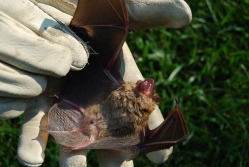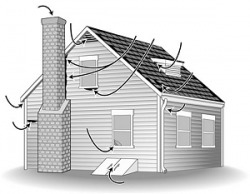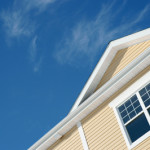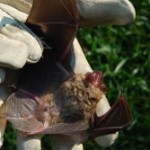Concord, Charlotte, and Lake Norman Area Bat Removal with Guaranteed Results! 704-929-4677
 North Carolina bats generate a natural fear among many people. They’re mysterious creatures that can be unnerving when they are in your North Carolina home, condo, business, or church. An experienced bat removal professional can quickly determine where bats are entering your home and formulate a humane strategy for their removal.
North Carolina bats generate a natural fear among many people. They’re mysterious creatures that can be unnerving when they are in your North Carolina home, condo, business, or church. An experienced bat removal professional can quickly determine where bats are entering your home and formulate a humane strategy for their removal.
The goal for complete bat removal is to provide a one-way exit for the bats, which may require working high above the ground on a two or three-story ladder, hydraulic lifts, or navigating steeply pitched roof-lines. One-way bat exclusion doors are vital to avoid completely sealing the home and trapping bats inside. Trapped bats become desperate and are masters at seeking alternative routes outside, possibly landing them right into your living room.
Successful bat removal requires the skills of a properly trained professional to ensure that they don’t get back inside through a different location. Complete sealing of a home”s roof-line, vents, and other ½ inch openings are required to prevent entry. Due to the complexity of performing proper bat removal, many people find that exclusions are outside the scope of a do-it-yourself project. Safety is a prime reason to consider a professional. All of our trucks are stocked with the necessary equipment to improve safety and get the job done right the first time. We are fully insured and licensed by the state of North Carolina for Wildlife Damage Control.
Charlotte and Lake Norman Area Bat Removal
Providing Guaranteed results for Bat Control and Bat Removal (or Bats in the Attic) in Charlotte, Huntersville, Cornelius, Mooresville, Davidson, Troutman, Davidson, Salisbury, Statesville, Denver, Gastonia, Shelby, Hickory, Boone, Morganton, and all surrounding areas.
Signs that you have a bat infestation:
[checklist]
- Scratching sounds, especially at night, but if there are babies you may hear them more during the day.
- Chirping or squeaking sounds that come from the attic, walls or chimney during June, July or August.
- A concentration of bat droppings on exterior walls, decks or porches.
- A concentration of droppings in your attic or other areas of your house.
- A urine smell that come and goes but is especially bad on humid hot days.
- Bats flying away from your house in the evening or towards your house first thing in the morning.
[/checklist]
The Exclusion Process: The exclusion is just that, we exclude the bats from the building by sealing off all possible entry points and placing one way doors over the known entry points. The sealing can be done by multiple different methods, and every situation warrants a different method. The one way doors must be placed exactly right, if not then you run the risk of blocking off their path of travel. If this happens the bats will attempt to find another way out. Unfortunately the rest of the house is sealed off at this time so the bats either die or find their way into the living quarters of the house or business. Once an inspection is done we give you a detailed quote explaining what we are going to do. The quote will also contain pictures so that you can see everything that we see without having to be around the bats.
Health Concerns: Bats are mammals that fall in the order of Chiroptera. They are vectors of the rabies virus along with other diseases. Although less than 1 percent of all wild animals carry the rabies virus it is still a concern when they are around. To eliminate any risk of contracting the virus never handle a bat, whether it is on the ground outside, on the floor in the house, or hanging on the wall. Leave it to a licensed professional who is trained in the proper handling of the bats. Another concern is the Histoplasmosis capsulatum. This fungus is most frequently found in soil enriched with excreta from bats and birds. Human infections occur through breathing the dust spores when this bat or bird guano is disrupted. Some infections produce flu-like symptoms such as coughing and shortness of breath. For more information on the Histoplasmosis capsulatum fungus visit www.cdc.gov.
Popular Entrances for Bats to get into the house.
 This photo indicates the most popular places that bats will enter. Bats need an area about the size of a dime to enter the house. Although not all bats hanging around the house are in the living area or attic space, over time they will gain entry and find their way in. Mostly on extremely hot days, and times of hibernation, these bats begin to become mobile and curious looking for either a warmer or colder place to establish their colony. Unfortunately they end up finding their way into the house.
This photo indicates the most popular places that bats will enter. Bats need an area about the size of a dime to enter the house. Although not all bats hanging around the house are in the living area or attic space, over time they will gain entry and find their way in. Mostly on extremely hot days, and times of hibernation, these bats begin to become mobile and curious looking for either a warmer or colder place to establish their colony. Unfortunately they end up finding their way into the house.
To schedule an bat inspection please contact Animal Solutions.


